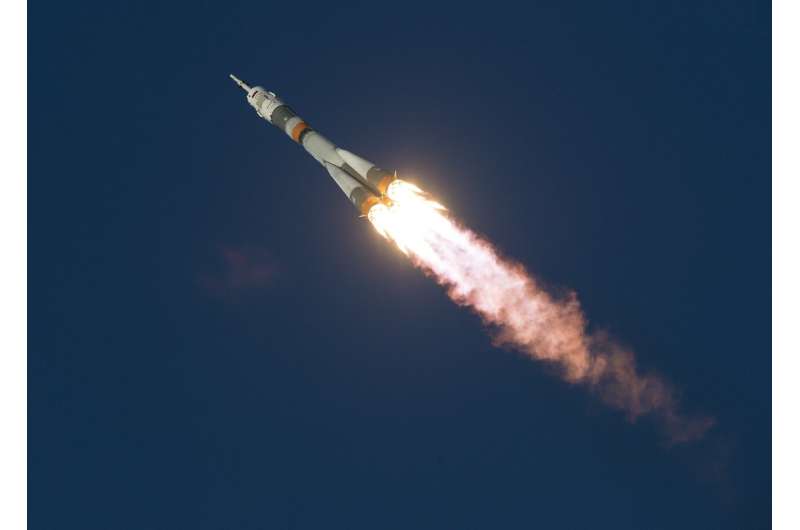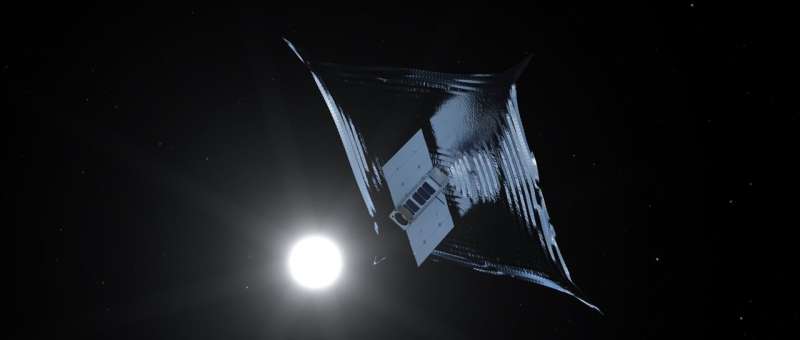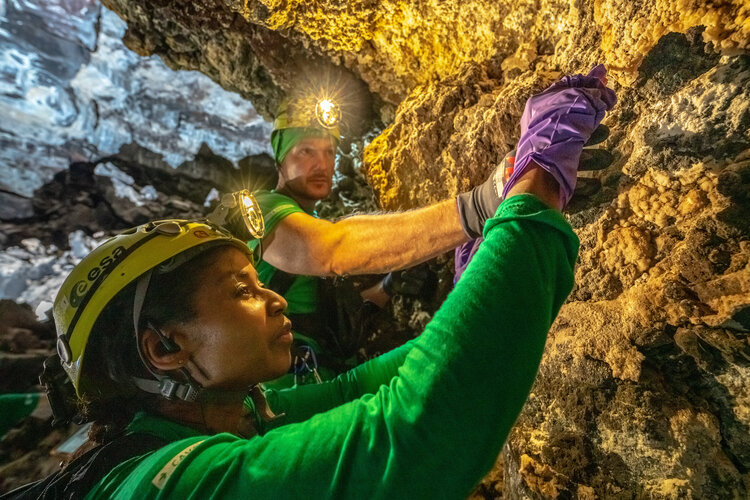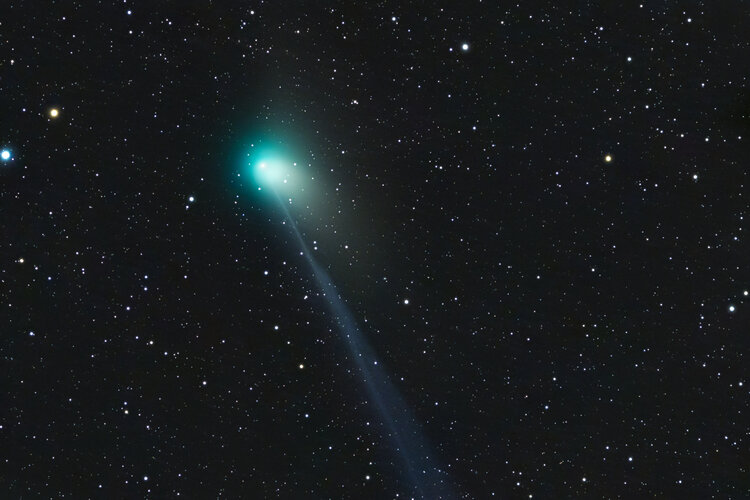Esri signs Space Act Agreement with NASA
Thursday, 02 February 2023 10:19 The science community at large is undertaking critical work, researching solutions to the world's most pressing challenges, many of which require a geographic approach. The ability of scientists and researchers to make informed decisions related to these challenges-from natural disasters to climate change mitigation-relies heavily on accessible, authoritative geospatial data. To support these ef
The science community at large is undertaking critical work, researching solutions to the world's most pressing challenges, many of which require a geographic approach. The ability of scientists and researchers to make informed decisions related to these challenges-from natural disasters to climate change mitigation-relies heavily on accessible, authoritative geospatial data. To support these ef Latest milestone brings NTS-3 Vanguard closer to 2023 launch
Thursday, 02 February 2023 10:19 The Department of the Air Force's Navigation Technology Satellite-3, or NTS-3, Vanguard program has reached another major milestone in preparation for the satellite's launch in late 2023.
Industry partner L3Harris Technologies, the spacecraft prime contractor, recently delivered the NTS-3 space vehicle to an Air Force Research Laboratory, or AFRL, integration and test facility at Kirtland
The Department of the Air Force's Navigation Technology Satellite-3, or NTS-3, Vanguard program has reached another major milestone in preparation for the satellite's launch in late 2023.
Industry partner L3Harris Technologies, the spacecraft prime contractor, recently delivered the NTS-3 space vehicle to an Air Force Research Laboratory, or AFRL, integration and test facility at Kirtland Meteorites reveal likely origin of Earth's volatile chemicals
Thursday, 02 February 2023 10:19 Meteorites have told Imperial researchers the likely far-flung origin of Earth's volatile chemicals, some of which form the building blocks of life.
They found that around half the Earth's inventory of the volatile element zinc came from asteroids originating in the outer Solar System - the part beyond the asteroid belt that includes the planets Jupiter, Saturn, and Uranus. This material i
Meteorites have told Imperial researchers the likely far-flung origin of Earth's volatile chemicals, some of which form the building blocks of life.
They found that around half the Earth's inventory of the volatile element zinc came from asteroids originating in the outer Solar System - the part beyond the asteroid belt that includes the planets Jupiter, Saturn, and Uranus. This material i Electrons in the fast lane
Thursday, 02 February 2023 10:19 Ever wondered what makes your computer and your other electronic gadgets slow or fast in their performance? It is the time it takes electrons, some of the tiniest particles of our microcosm, to stream out from minute leads inside the transistors of electronic microchips and to form pulses. Methods to speed up this process are central for advancing electronics and their applications to ultimate p
Ever wondered what makes your computer and your other electronic gadgets slow or fast in their performance? It is the time it takes electrons, some of the tiniest particles of our microcosm, to stream out from minute leads inside the transistors of electronic microchips and to form pulses. Methods to speed up this process are central for advancing electronics and their applications to ultimate p Virgin Orbit raises $10 million as financial stopgap
Thursday, 02 February 2023 10:09
Virgin Orbit said Feb. 1 it raised $10 million from another Virgin affiliate, a move that provides only a short-term fix to its financial difficulties.
OneWeb secures $50 million Canadian satellite capacity deal
Wednesday, 01 February 2023 23:04
TAMPA, Fla. — Remote communications provider Galaxy Broadband said Feb. 1 it is buying capacity from OneWeb for $50 million in a multi-year deal to offer low Earth orbit broadband services to more sites across Canada.
Space Coast bustling with 4 crew launches on tap from SpaceX, Boeing
Wednesday, 01 February 2023 17:50
Before summer, 14 more humans could launch from U.S. soil as SpaceX has three missions set to lift off from Kennedy Space Center on Crew Dragons while Boeing looks to send its CST-100 Starliner up to the International Space Station for the first time with people on board.
"We're heading into, I would say one of the busiest increments in the history of station," said Kathryn Lueders, NASA's associate administrator for the Space Operations Mission Directorate at press conference last week. "We have a string of critical missions coming up."
That includes not only crewed flights from the Space Coast, but a replacement Soyuz capsule to be sent up from Russia to the station for one damaged by micrometeorites and resupply missions from SpaceX, Northrop Grumman and Russia in the next four months.
The first crewed flight, though, coming no earlier than Feb. 26 is the Crew-6 mission flying on SpaceX's Crew Dragon Endeavour taking up NASA astronaut and mission commander Stephen Bowen, flying for the fourth time, and first timers pilot Woody Hoburg of NASA, United Arab Emirates astronaut Sultan AlNeyadi and Roscosmos cosmonaut Andrey Fedyaev.
South Korea picks Vega C to launch satellite grounded by Russian sanctions
Wednesday, 01 February 2023 16:27
South Korea has selected Arianespace’s Vega C rocket to launch a multipurpose imaging satellite, KOMPSAT-6, that has remained grounded due to sanctions imposed on Russia for invading Ukraine.
Space Development Agency issues draft solicitation for 72 satellites
Wednesday, 01 February 2023 14:33
In a Jan. 31 draft solicitation, the agency seeks input from vendors interested in bidding for 72 satellites and supporting ground systems
What future for the Space Launch System?
Wednesday, 01 February 2023 14:04
Does a successful first flight finally mean that SLS will return astronauts to Earth’s moon more than 50 years after astronauts last visited? Does it earn SLS a future among the United States’ fleet of launch vehicles?
Successful in-flight demonstration of the ADEO braking sail
Wednesday, 01 February 2023 13:43
The Drag Augmentation Deorbiting System (ADEO) breaking sail was successfully deployed from the ION satellite carrier in late December 2022.
Astral alchemy
Wednesday, 01 February 2023 12:10 The Standard Model of particle physics tells us that most particles we observe are made up of combinations of just six types of fundamental entities called quarks. However, there are still many mysteries, one of which is an exotic, but very short-lived, Lambda resonance known as ^(1405).
For a long time, it was thought to be a particular excited state of three quarks-up, down, and strange-
The Standard Model of particle physics tells us that most particles we observe are made up of combinations of just six types of fundamental entities called quarks. However, there are still many mysteries, one of which is an exotic, but very short-lived, Lambda resonance known as ^(1405).
For a long time, it was thought to be a particular excited state of three quarks-up, down, and strange- Turning astronauts into Moon explorers
Wednesday, 01 February 2023 10:37ESA YGT applications now open!
Wednesday, 01 February 2023 09:27
The 2023 Young Graduate Trainee positions are now open for applications! Opportunities are available in engineering, science, IT and business services. Find out more and apply now.



